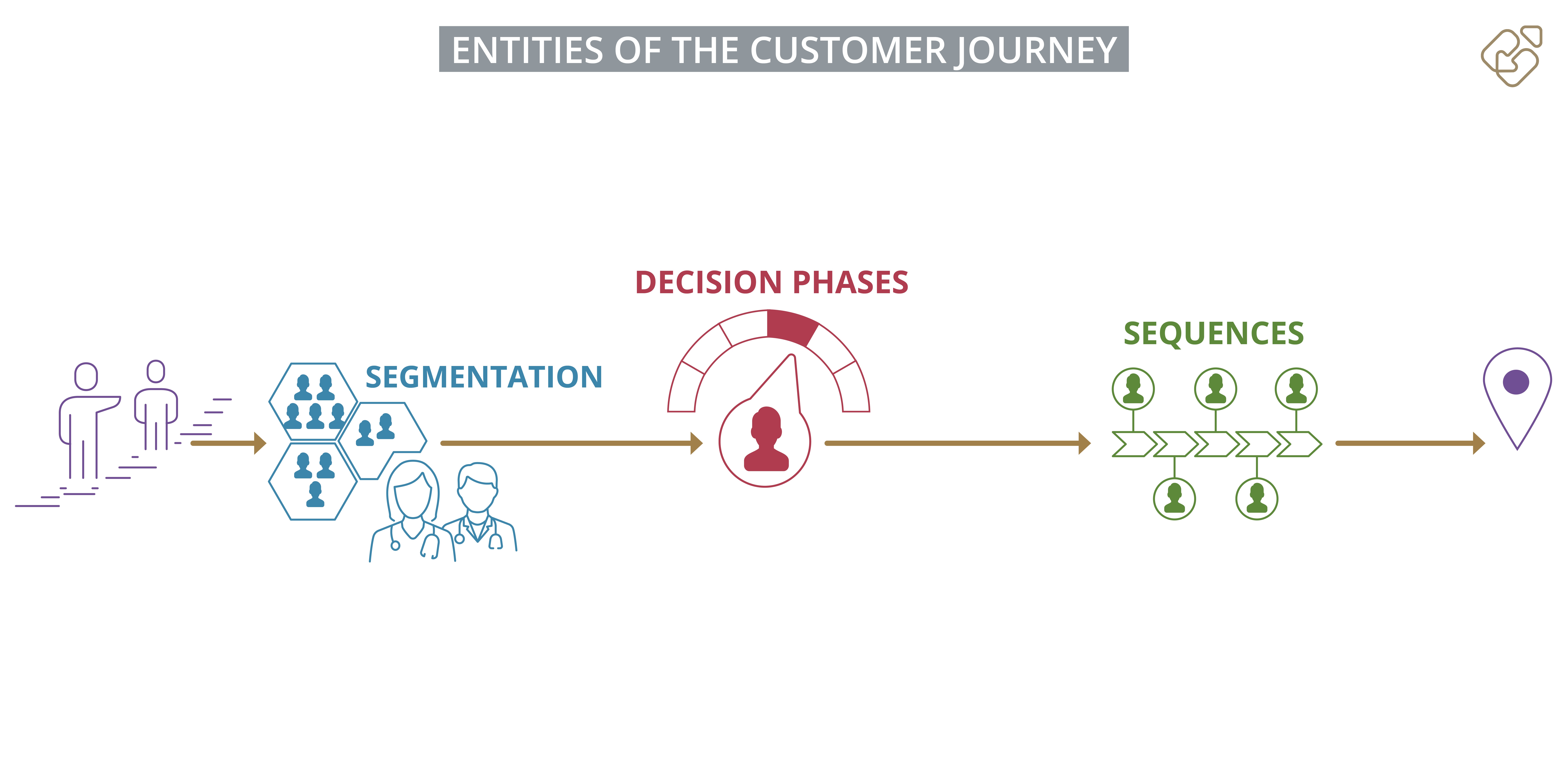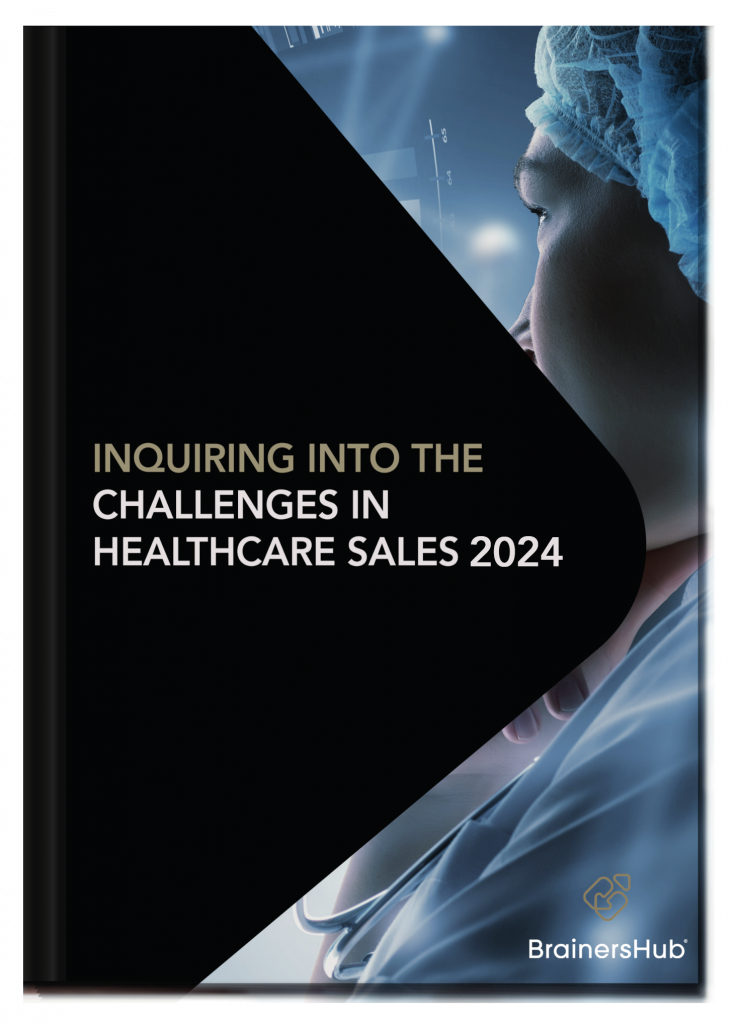Part 1 of 3 in our article series: Understanding Omnichannel Pharma Marketing
In recent years, omnichannel pharma marketing (OCM) has emerged as a pivotal development in the pharmaceutical market. In this article series, we aim to provide comprehensive insights into OCM, covering the following key aspects:
1. What is Omnichannel Pharma Marketing?
2. Why is Omnichannel Pharma Marketing so relevant for pharmaceutical companies right now?
3. How does Omnichannel Pharma Marketing work?
Part 1: Customer Journey in Omnichannel Pharma Marketing
Part 2: Channels in Omnichannel Pharma Marketing
Part 3: Data Management in Omnichannel Pharma Marketing
4. The Advantages of Omnichannel Pharma Marketing
5. What Impact does Omnichannel Pharma Marketing have on the Success of Pharmaceutical Companies?
+ Whitepaper: Implementation of Omnichannel Pharma Marketing
In our previous article, „What is Omnichannel Pharma Marketing?“, we discussed the customer journey as the foundation of OCM (Omnichannel Pharma Marketing) with the primary goal of connecting marketing and sales channels in ways that:
1. Address the specific needs of the target audience.
2. Deliver a consistent brand message across all channels and activities.
3. Engage doctors in their current decision-making phase.
In this article, we will delve deeper into understanding the mechanics behind the customer journey in OCM by examining its three critical entities:

1. Entity of the Customer Journey: Segmentation
At the core of the omnichannel approach lies Customer Centricity – aligning marketing and sales activities with the unique needs of the target audience. However, the needs of doctors within the target group can vary significantly, making a "one size fits all" approach inadequate.
To create an appropriate customer journey, the target group is segmented based on basic characteristics (explained in more detail in Part 3: Data Management in Omnichannel Pharmaceutical Marketing). By gathering data, physician cohorts with similar needs are formed, and a suitable customer journey is developed for each group. This approach strikes a balance between catering to different physicians' needs and efficiently utilizing resources. During the initial contact phases, it is beneficial to use specific content and sequences for several physicians simultaneously since a fully personalized approach might be impractical and costly at this stage.

FREE WHITEPAPER
How to Implement Omnichannel Pharma Marketing in Practice?
- 5 Steps to Success - OCM Implementation Roadmap
- 5 Best Practices in Successful OCM Implementation
- 3 Success Factors that make the Difference in Practice
2. Entity of the Customer Journey: Decision Phases
A physician's decision-making phase on the path to a prescription or a change of therapy constitutes the second entity of the customer journey. Different phases influence which needs, topics, and channels are most important for physicians at any given time. As a result, the customer journey can be roughly divided into the following four phases:
- Awareness: The first phase primarily focuses on creating awareness among the target group, whether it involves building brand awareness for a new product or drawing attention to a particular disease and its treatment options. It's crucial to understand the number of contact points required to penetrate the target audience's awareness. Experts across industries estimate that around 15-20 contact points¹ are needed before a brand becomes actively perceived by customers – a figure that has increased significantly with digitization over the past decade. However, the emphasis is not solely on the quantity of touchpoints but more importantly on their quality. That's why OCM places its focus on two aspects: First, coordinating various touchpoints to deliver a consistent brand message, and second, tailoring measures to address the specific needs of the target group, ensuring their relevance. To effectively reach the medical target group during awareness marketing, pharmaceutical companies should mainly address the target group's issues and problems with high-quality content instead of advertising their own products.
- Consideration: During this phase, physicians typically explore various treatment approaches and methods for a specific medical condition. The goal for pharmaceutical companies is to position their products as suitable solutions for the indicated condition. Pharmaceutical companies need to establish their brand as a reliable problem solver that supports physicians in managing the challenges of the disease and its treatment. To achieve this, it is imperative to give their solution a clear and distinct profile that sets it apart from the competition. Apart from emphasizing clear competitive advantages such as simpler applications or demonstrably superior therapeutic success, the perception of the company behind the product also plays a decisive role in shaping this profile. Awareness marketing already plays a significant role in shaping this perception before the consideration phase. Hence, in this phase, the focus lies on connecting the general brand image to the benefits of specific products. This is particularly important in market segments where product effects are similar or indistinguishable. Here, effective storytelling can be invaluable in positioning the brand as an innovator, problem solver, or trustworthy partner. The optimal goal for brands is to establish themselves as "top of mind" – the first association in the target group's mind when faced with a particular issue (e.g., headache -> aspirin).

- Decision: Given the substantial consequences associated with medical decisions, cultivating trust is essential in persuading physicians to consider a treatment option. Thus, pharmaceutical companies need to understand what factors contribute to trust at this stage. For instance, does the physician require specific information, such as study data, or is building a strong interpersonal relationship with the sales force crucial for them? Additionally, a physician's network often plays a decisive role, as they attach great importance to the opinions and experiences of colleagues and medical key opinion leaders (KOLs). Therefore, pharmaceutical companies should not limit their efforts to direct contact with the physician but should also consider their environment when devising their strategy. Personalization of measures becomes increasingly important at this stage. While communication previously occurred at the cohort level, measures in the decision phase typically become more tailored to individual physicians.
- Retention: Instead of solely focusing on short-term sales, the primary focus of pharmaceutical sales and marketing is to enhance the lifetime value of physicians. Building sustainable customer relationships is essential to leverage the prescription potential of physicians in the long term. Thus, the first prescription should be regarded as the beginning of a new phase in the customer relationship rather than the endpoint of the customer journey. A physician who has decided to test or prescribe a product presents great potential for sustaining sales growth and promoting further products. Actively nurturing and promoting this relationship is vital. OCM therefore relies on continuously enriching customer profiles, with information from previous interactions, to develop a detailed understanding of physicians' needs and respond sensitively. This fosters a deeper basis of trust that binds the physician to the company in the long run.
Since many decisions tend to be made by physicians before the first direct sales contact, pharmaceutical companies should invest in effective digital marketing early on. As the customer journey progresses, direct contact with the sales force becomes more significant. Furthermore, the focus of communication should align with the respective decision-making phase – the earlier the phase, the less product-heavy the communication should be. As the consideration or decision phases approach, communication should focus more on the company's specific offerings. This approach enables pharmaceutical companies to establish an early connection with physicians by addressing their current needs and challenges before presenting their products as suitable solutions.

Free whitepaper
Challenges in Healthcare Sales 2024
- The biggest Challenges in Healthcare Sales 2024
- The hottest Trends in Healthcare Marketing
- What Sales Experts Wish For
3. Entity of the Customer Journey: Sequences
In OCM, the customer journey faces a delicate balancing act between two conflicting requirements. On one hand, all measures across channels and phases should seamlessly link into an overall flow. On the other hand, it is equally important to continuously adapt contact points based on customer feedback. To address this challenge, the customer journey in OCM is structured into sequences, each representing a short series of interactions within the overall journey.
These sequences are typically designed around specific topics or events. For instance, a sequence could revolve around a webinar promoted via LinkedIn, where registrations are collected on the website. Attendees are then kept informed through a newsletter and subsequent email follow-up. Finally, the sales force reaches out to the physician to remind them of the event during their visits. These actions within the sequence are precisely targeted based on data and previous experiences. This enables pharmaceutical companies to develop reliable building blocks for the customer journey, which can be further customized to cater to the unique needs of each target group.
Furthermore, OCM allows companies to flexibly tailor each physician's customer journey to their responses, by selecting the appropriate sequence that aligns with their current phase and associated needs. In this regard, pharmaceutical companies stand to gain significant advantages from the wealth of profile data collected for each physician. By leveraging the right data infrastructure, this selection process can even be automated, streamlining internal decision-making processes and providing ample room for data-driven optimization.
By embracing sequences as a fundamental building block of the customer journey in OCM, pharmaceutical companies can achieve a harmonious blend of cohesion and adaptability. The sequences not only ensure a consistent brand experience but also foster responsive and personalized interactions with physicians at every stage. This strategic approach empowers companies to continually refine and enhance their customer journey, propelling their OCM efforts to new levels of effectiveness and success.
Lead Generation as a Sequence
Lead generation holds a pivotal role within many sequences of OCM marketing. This is because numerous marketing and sales initiatives require the establishment of active contacts, such as opt-ins for newsletters or registrations for events and seminars. The goal of lead generation is to transform passive leads into engaged participants through a three-step process:
- Contact Building: The initial step involves reaching out to leads with topics relevant to their interests. This can be achieved through targeted advertising or content marketing campaigns tailored to keywords and search terms that resonate with the intended audience.
- Conversion: In the second step, these leads are collected at a central point, often a landing page, with the intention of translating their interest into direct contact. This can entail activities such as registrations, opt-ins, appointment bookings, or content downloads.
- Interaction: The final step leverages the established contact to initiate an exchange with the physician regarding the selected measure, which could involve events, conversations, whitepapers, and more.
The seamless interplay of the three entities - segmentation, decision phases, and sequences - illustrates how customer journeys in OCM effectively combine agility and efficiency. Pharmaceutical companies can actively address the distinct needs and decision-making phases of different physicians, while simultaneously working efficiently by grouping physicians into segments or catering to them individually through automated sequences.
By implementing lead generation as part of a well-designed sequence, pharmaceutical companies can significantly enhance their customer engagement efforts. Effectively capturing and nurturing leads throughout the customer journey ensures a steady stream of informed and receptive prospects. Moreover, this strategic approach allows for more personalized interactions with physicians, leading to a deeper understanding of their unique requirements and facilitating meaningful, long-lasting relationships.
In conclusion, lead generation serves as a vital component in the sequences of OCM marketing. By strategically employing lead generation tactics, pharmaceutical companies can proactively engage with physicians, effectively aligning with their needs and optimizing the overall customer journey experience. This integrated approach contributes to the success of OCM strategies, fostering fruitful collaborations and driving measurable results in the ever-evolving pharmaceutical landscape.
EXPERT
Nicole Ehrhardt – Partner & Business Director

Erfolgreiches Projektmanagement mit und ohne Projektmanagement Beratung
Projektmanagement als Schlüssel zu langfristigen Erfolg: ✔️ Effiziente Ressourcenallokation ✔️Risiken minimieren ✔️Strategischen Ziele sichern

The Advantages of Omnichannel Pharma Marketing
Learn about the advantages of Omnichannel Pharma Marketing and how your company can benefit from them:
✔️ Customer centricity
✔️ Breaking down information silos
✔️ Cross-functional cooperation

Understanding Data Management in Omnichannel Pharma Marketing
Learn how data management works in Omnichannel Pharma Marketing and how pharma sales and marketing can benefit from it:
✔️ Data processing
✔️ Data infrastructure
✔️ Using data in practice
Sources:
1. attentionexperts.com, 2017
